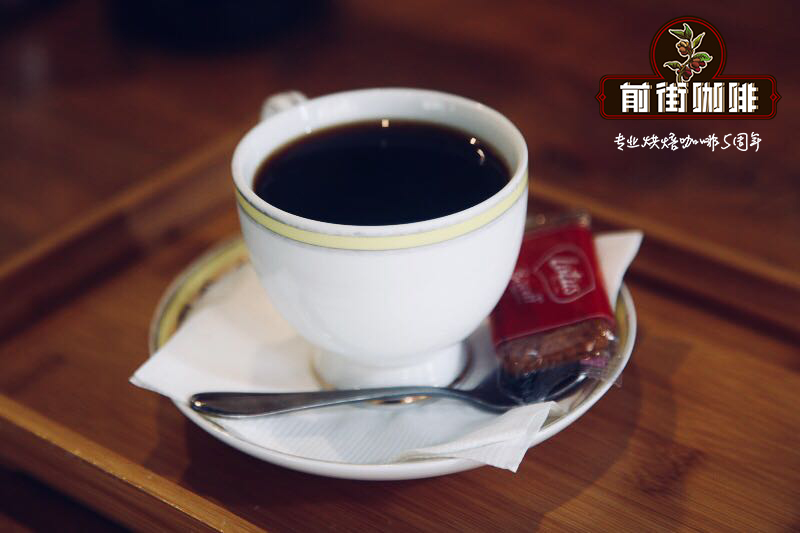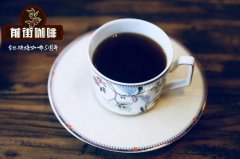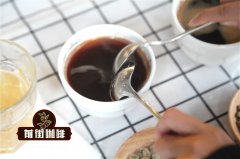The rise of Malaba Coffee, the planting Environment and treatment of Malaba Coffee

Professional coffee knowledge exchange more coffee bean information please follow the coffee workshop (Wechat official account cafe_style)
Malaba Coffee (Rwandan: Ikawa ya Maraba, French: Caf é de Maraba) is Fairtrade certified coffee, grown in the Malaba area of southern Rwanda.
Malaba's coffee crop is a bourbon of the Arabica species and is grown in fertile volcanic soil on high-altitude hills. The fruit of the coffee tree is mainly picked manually during the rainy season from March to May, and then transported to the cleaning station in Malaba to extract and dry the coffee beans. At some of these stages, coffee beans are divided into levels of quality. Farmers earn relative profits according to the output and quality of their coffee beans.
Malaba Coffee is sold to a number of roasting companies, among which the best quality is sold to the British Coffee roasting Company (Union Coffee Roasters) in the UK and the Public Coffee Company (Community Coffee) in the United States. As for the domestic market, the Rwandan specialty coffee roasting company buys coffee beans from Malaba and then turns to domestic sales. Malaba coffee is also used to brew beer.
In 1999, the Abauzam Gambi Cooperative (Abahuzamugambi) was founded, with about 2, 000 small farmers growing coffee trees under the management of the cooperative. Since 2000, the cooperative has been receiving funding from the National University of Rwanda (NUR) and the Joint strengthening Rwanda Agricultural Partnership Program (PEARL). The Abauzam Gambi Cooperative has improved the quality of coffee and successfully entered the professional coffee market.
Because this unique treatment came into being in the Malaba region along the Indian Ocean in western India. In the tropical monsoon climate of the Indian mainland, there is a southwest monsoon blowing from the sea every year during the rainy season from June to September. Locally produced coffee beans are specially placed in a special open warehouse to accept the warm and humid sea breeze, and in the process the coffee beans are constantly stirred to ensure uniform acceptance of sea breeze and moisture. The whole treatment lasted almost throughout the rainy season, lasting for 3 to 4 months, and finally the coffee beans changed from green to yellowish white, which looked like "old beans" after being drenched in the rain or aged for a long time, and because they were exposed to moisture for a long time, its volume is also more expanded. Finally, the unprocessed beans are manually selected and re-bagged, and the whole processing process is finished.
END
For more professional coffee exchanges, please scan the code and follow Wechat: qiannjie

Please indicate the source of the reprint.
Important Notice :
前街咖啡 FrontStreet Coffee has moved to new addredd:
FrontStreet Coffee Address: 315,Donghua East Road,GuangZhou
Tel:020 38364473
- Prev

Rwanda coffee, which is inseparable from coffee, has a flavor of fruity coffee beans.
Professional Coffee knowledge Exchange more information about coffee beans Please follow Coffee Workshop (Wechat official account cafe_style) Coffee a hope that Rwanda will not grow coffee before. Coffee was introduced into the country by German missionaries around the beginning of the 20th century. Since then, coffee has been a source of income for many rural families. However, no record in the history of Rwanda can ignore 1994
- Next

What kind of experience would cola and coffee be? it won't be bitter or astringent.
Professional coffee knowledge exchange more information about coffee beans Please follow Coffee Workshop (Wechat official account cafe_style) Coca-Cola launched a coffee-flavored Coke in the Japanese market this month. This coffee cola, which contains 50% more caffeine than regular cola, is named Coca-Cola Coffee Plus. Now it has appeared in the vending machine in Japan (this is also
Related
- How did the Salvadoran coffee industry develop in Central America?
- What exactly does the golden cup extraction of coffee mean?
- The Origin of Coffee flower
- [2023 Starbucks World Earth Day] there are more meaningful things besides free Starbucks coffee!
- What kind of coffee is there in Spain? 9 Flavors of Spanish Coffee
- Aromatic African coffee| Kenya's coffee culture and historical production area
- Liberica Coffee Bean knowledge: the characteristics of Liberian Coffee beans of the three original species of Coffee beans
- The origin and formula of Spanish latte introduces the taste characteristics of Bombon coffee in Valencia, Spain.
- How to adjust the solution of over-extracted coffee
- What is the tasting period of coffee beans? What is the period of coffee and beans? How should coffee wake up and raise beans?

